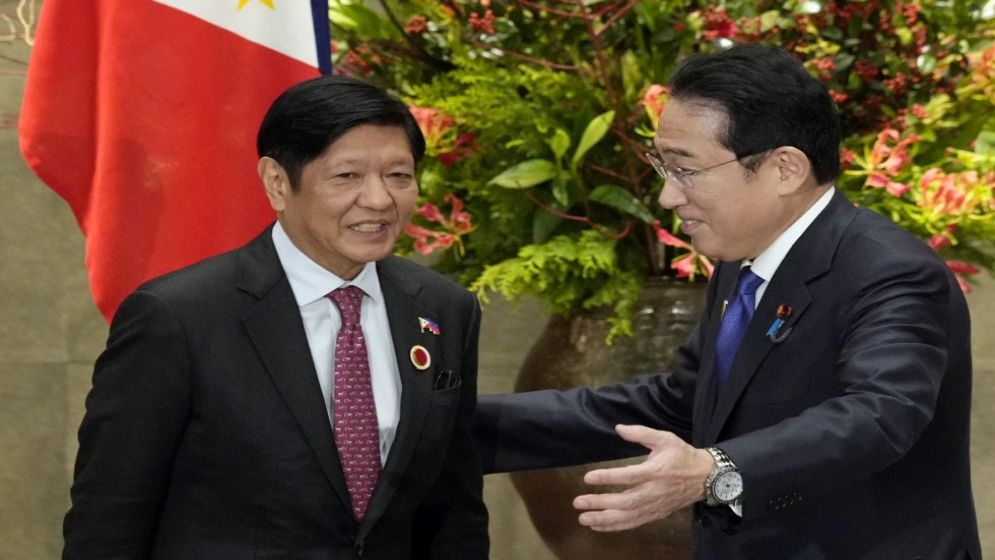Japan and Philippines sign defense pact allowing their forces to train in each other's territory
UNB
Publish: 08 Jul 2024, 04:57 PM

MANILA,
Philippines, Jul 8 (AP/UNB) - Japan and the Philippines signed a key defense
pact Monday allowing the deployment of Japanese forces for joint military
exercises, including live-fire drills, to the Southeast Asian nation that came
under brutal Japanese occupation in World War II but is now building an
alliance with Tokyo as they face an increasingly assertive China.
The Reciprocal Access
Agreement, similarly, allows Filipino forces to enter Japan for joint combat
training, was signed by Philippine Defense Secretary Gilberto Teodoro and
Japanese Foreign Minister Yoko Kamikawa in a Manila ceremony witnessed by
President Ferdinand Marcos Jr. It would take effect after ratification by the
countries' legislatures, Philippine and Japanese officials said.
Kamikawa and Japanese
Defense Minister Minoru Kihara are in Manila to hold talks with their
Philippine counterparts on ways to further deepen relations, the Philippine
government said in a statement.
The defense pact with
the Philippines is the first to be forged by Japan in Asia. Japan signed
similar accords with Australia in 2022 and with Britain last year.
Under Prime Minister
Fumio Kishida, the Japanese government has taken steps to boost its security
and defensive firepower, including a counterstrike capability that breaks from
Japan's postwar principle of focusing only on self-defense, amid threats from
North Korea and China's growing assertiveness. It's doubling defense spending
in a five-year period to 2027 in a move to bolster its military power and make
Japan the world's third-biggest military spender after the United States and
China.
Many of Japan's Asian
neighbors, including the Philippines, came under Japanese aggression until its
defeat in World War II and Japan's efforts to bolster its military role and
spending could be a sensitive issue. Japan and the Philippines, however, have
steadily deepened defense and security ties.
Kishida's moves dovetail
with Marcos' effort to forge security alliances to bolster the Philippine
military's limited ability to defend Manila's territorial interests in the
South China Sea. The busy sea passage is a key global trade route which has
been claimed virtually in its entirety by China but also contested in part by
the Philippines, Vietnam, Malaysia, Brunei and Taiwan.
The United States has
also been strengthening an arc of military alliances in the Indo-Pacific to
better counter China, including in any future confrontation over Taiwan, and
reassure its Asian allies. Japan and the Philippines are treaty allies of the
U.S. and their leaders held three-way talks in April at the White House, where
President Biden renewed Washington's "ironclad" commitment to defend
Japan and the Philippines.
Japan has had a
longstanding territorial dispute with China over islands in the East China Sea.
Chinese and Philippine coast guard and navy ships, meanwhile, have been
involved in a series of tense confrontations in the South China Sea since last
year.
In the worst
confrontation so far, Chinese coast guard personnel armed with knives, spears
and an axe aboard motorboats repeatedly rammed and destroyed two Philippine
navy supply vessels on June 17 in a chaotic faceoff in the disputed Second
Thomas Shoal that injured several Filipino sailors. Chinese coast guard
personnel seized seven navy rifles.
The Philippines strongly
protested the Chinese coast guard's actions and demanded $1 million for the
damage and the return of the rifles. China accused the Philippines of
instigating the violence, saying the Filipino sailors strayed into what it
called Chinese territorial waters despite warnings.
Japan and the United
States were among the first to express alarm over the Chinese actions and call
on Beijing to abide by international laws. Washington renewed its warning that
it is obligated to defend the Philippines, its oldest treaty ally in Asia, if
Filipino forces, ships and aircraft come under an armed attack, including in
the South China Sea.
End/UNB/AP/SU
